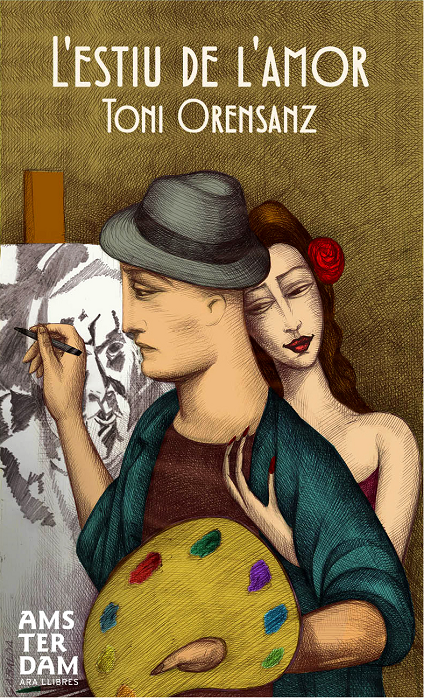«The summer of love», Toni Orensanz in the Reading Club
We've just finished the fifth and final season the Reading Club of the Museu Picasso with the reading of L’estiu de l’amor (The summer of love) a novel by Toni Orensanz about the stay of Fernande Olivier and Pablo Picasso at Horta de Sant Joan.

Orensanz’s approach is extremely interesting, not only for Picasso fans like the ones we can find in the club, but also for anybody who might have the slightest interest about the several ways of narrating historic episodes, that is to say, about the sort of questions that a writer can pose when working in a fictional way with a documented fact. One of the facts which Orensanz insists on is the mythical quality of the narrations that are still explained in Horta, about the time when Picasso came with such a pretty girl: or that Fernande came with such an ugly painter. Because that is one of the most lucid choices of the work by Orensanz: that of moving Picasso away from the centre of the narration, and fixing the reader’s attention on Fernande, and on the impact that the pretty and modern lady of Paris would have on Horta de Sant Joan at the beginning of the twentieth century. Taken from this point of view, the painter becomes almost irrelevant and the convulsions of everyday life, fascinated by the French lady, move into the foreground in the form of a pleasant satire. The facts are there: the development of the first cubism of Picasso, the beginning of the end of his relation with Fernande (the use and manipulation that Orensanz makes of the correspondance that Fernande keeps up with Gertrude Stein is impeccable), the twists and turns from that period, but Orensanz is interested in the wider history, as an excuse to tell a micro story. Here the novel takes on its last meaning: it is not so much the issue of insisting on what has already been imposed as History, but to highlight the everyday life, a life starred by the majority of humanity but which is silent, which is carried out between major city and major city, and between one genius and another, between catastrophe and catastrophe. The fact that Paris is a starting point for narrating the closed, conservative and at times grotesque town of Horta de Sant Joan is not only a wise choice: it is an absolute delight. P.S. Given that this session represents the end of five years of the project of the Reading Club of the Museu Picasso, I would like to take this opportunity to applaud and celebrate this initiative, of which I have had the pleasure and privilege to form part. One of the challenges posed to all cultural institutions is that of defining a range of diverse relations, of various degrees of permeability, if that is one of the aims, with the society of which they form part. The idea of a Reading Club, one which is free of charge, annual, designed as a space of patient and rigorous exploitation of a series of lines of force, which has allowed us to read Picasso, to read with Picasso and to read from Picasso, for me I think is exemplary. Reading is always a way of creating a community, even if it is one that is established, while the reading lasts, between reader and author. Ours has been an ongoing community, made up of texts, naturally, but also, and above all, of loyal Picasso fans, of sporadic visitors, of specialists, of novelists, of teachers and professors, of passionate amateurs, of illustrators, of musicians, of publishers, of gallery owners, of poets and of bibliophiles, to mention just a few. Picasso has been the imaginary space of the encounter; the Museum, the effective space. Thank you to everyone for making it possible. Borja Bagunyà Related links Reading Club of the Museu Picasso

